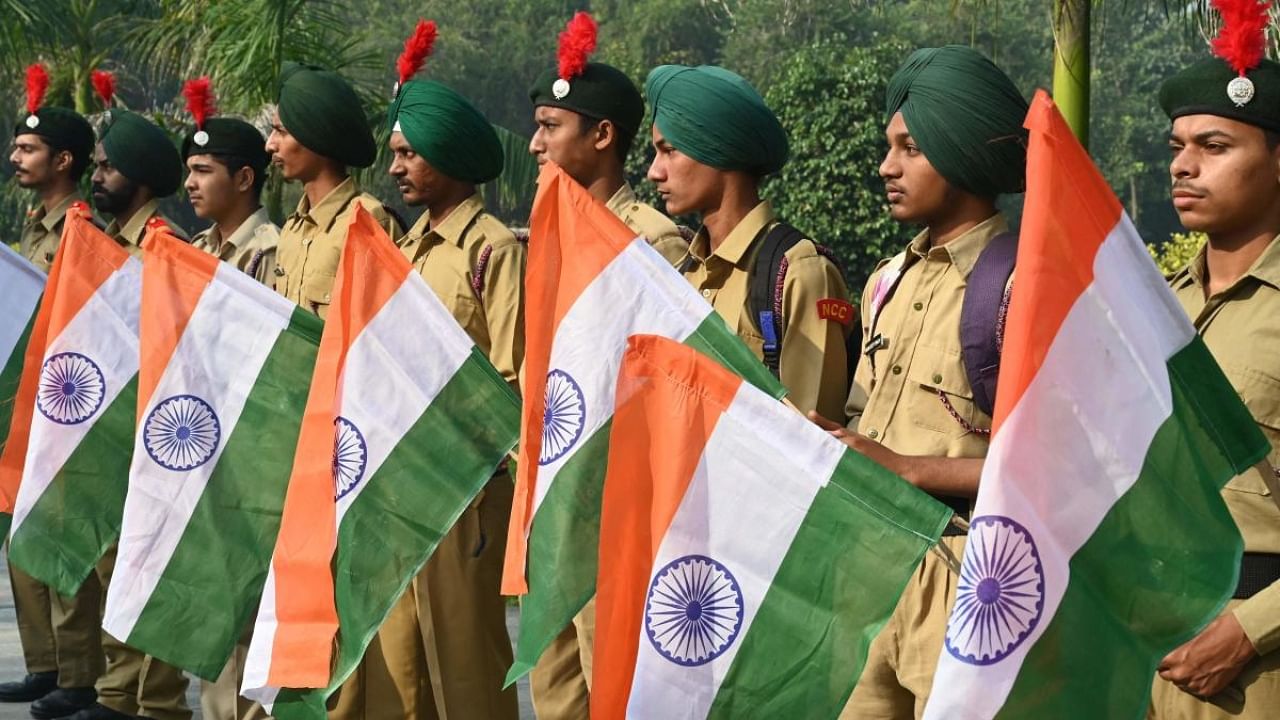
The excitement around ‘Har Ghar Tiranga’ is over. Flags have been lowered and stored. From the ramparts of the Red Fort, Prime Minister Narendra Modi had exhorted us to continue the nation-building afresh and carry forward the spirit of Independence which we inherited from our forefathers.
How to keep the tricolour flying with pride beyond the roof-top of our houses, communities (rural and urban) and continue to enjoy the independence?
Also Read: Help poor and not-so-poor
Are our homes free from hunger, squalor and deprivation? With different cut-off lines (Tendulkar or Rangarajan criteria), 30 per cent-25 per cent are below the poverty line. Are our parents earning enough wages or generating enough income to buy food and other essentials to feed our children and meet their family expenses?
Is there independence in a village where children don’t go to school and open defecation continues in spite of swachh abhiyan?
I visited a remote village Tadadei, located next to the Karpei Health Centre of Thumul Rampur block, in Kalahandi district, Odisha, on August 4.
The fate of 7 toilets built under the PM’s Swachh Bharat Abhiyan was an eye-opener. The pipe connection from an uphill water source was broken, and hence there was no water supply to the toilets; its doors dismantled and fixed inside the rooms of beneficiary houses. There was absolutely no ownership: it was not a felt need of the beneficiaries and there was no effort to prepare the community to accept the welfare schemes.
Children are wandering around without going to school, which is more than a 2-km walk from Tadadei. And there are no teachers. Anganwadi workers are neither tribals nor from the same village. Imported anganwadi workers, like teachers, are largely absent most of the days.
What will be the future of these children? When will we attain Sustainable Development Goals in such a microcosm? Can disaggregated data be as glamorous and representative as our state level achievements in SDGs?
Azadi ka Amrit Mahotsav ends up in just hoisting a flag here, like any other day in 1947 or 2022. I was impressed by one youth, who had passed high school and was enthusiastically downloading materials on his smartphone for his Independence Day speech. I motivated him to speak to the villagers from illiteracy, ill health, apathy and fatalism, as there are no more colonialists and foreigners to fight against, but their own attitudes and inaction.
In Sarasdol village, Lormi block of Bilaspur district, my friends found unused Ujjwala scheme gas cylinders put to a different use -- to keep trunks and suitcases -- while they continue using firewood for cooking.
Non-Ujjwala scheme families also continue to use firewood, as the replacement cylinder costs around Rs1,100. And there are similar stories in Khurda district of Odisha.
Some are mortgaging the cylinder instead of jewellery to borrow money for short-term financial needs. Some are lending their gas cylinders to friends and they enjoy the subsidy credited to their account as an attractive additional incentive whenever they do the refill.
Policies from Delhi should translate into enthusiastic implementation in the remotest villages. This is crucial to flutter our tiranga with pride. But who bothers about monitoring the outcome? Audits stop at financial flow, receipts, vouchers and outputs of programmes, but do not examine the outcome or achievement of goals.
Our centralised planning and enthusiasm to implement projects to attain targets quickly, somehow, overlooks preparation of the community, both for regular use and self-monitoring. Hence, funds are spent but there are no desired outcomes. We need independence from this trend.
As much as police, armed forces and government officials, farmers’ cooperatives, milk, poultry and horticultural cooperative societies and forest produce tribal societies must hoist their flags with pride, because they have led so many families to financial security and independence from debt trap and pawn brokers.
The situation at the local level can change only through efforts led by the local community. Local self-governments are the key agencies to institutionalise community efforts. We need to strengthen them to overcome corruption, ignorance and lack of political leadership or apathy. Kerala LSGs, energetic and visionary, took the lead in Covid control through 21,682 elected ward members from 978 village GPs and 65 municipal/corporation councils trained and guided by the Kerala Institute of Local Administration (KILA), Thrissur. Chhattisgarh had the formidable power of Mitanins (women health volunteers), though panchayat raj institutions are weak. In Odisha, Gaon Unnayan Samitis were active in pandemic control.
India contributed 57.3 per cent of the global poor. And we lack funds to clear the daily wages under MNREGA, which is a lifeline for the poor.
Out of the 63 million MSMEs, 99 per cent are micro enterprises which could revive the rural economy. But they have less than 10 per cent access to formal credits. Why? When the top 1 per cent of earners swallow 22 per cent of the total income in the country, what is the economic freedom the majority of citizens enjoy? We can be proud of the increasing billionaires count - 142 post Covid-19 pandemic compared to pre-pandemic number of 102.
We have favoured infrastructure, highways, power generation and industrial production compared to eco-friendly farming, land and water conservation, producer cooperatives, strengthening storage facilities and local marketing networks and grassroot democratisation of governance and administrative structures.
In spite of the 73rd and 74th Constitutional amendments, the gains of freedom struggle and independence are yet to translate into ‘gram swaraj’ for local self-governments in both rural and urban areas. There is a long way to go before we can hoist the tiranga with pride.
(The author is a paediatrician and public health activist)